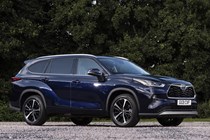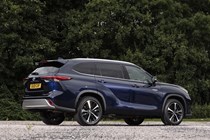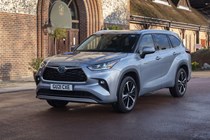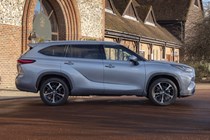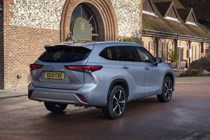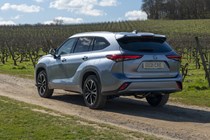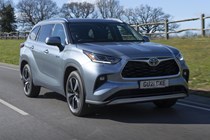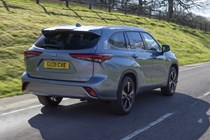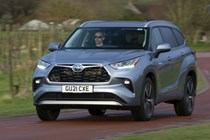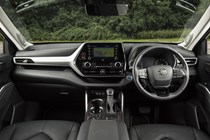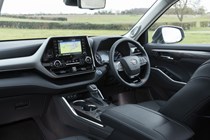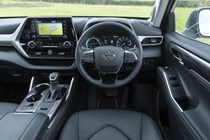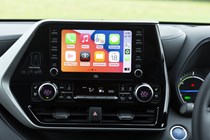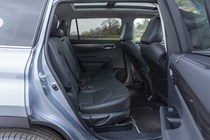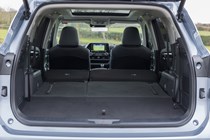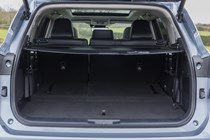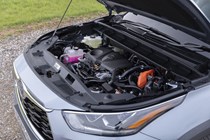
Toyota Highlander SUV (2021-2022) engines, drive and performance
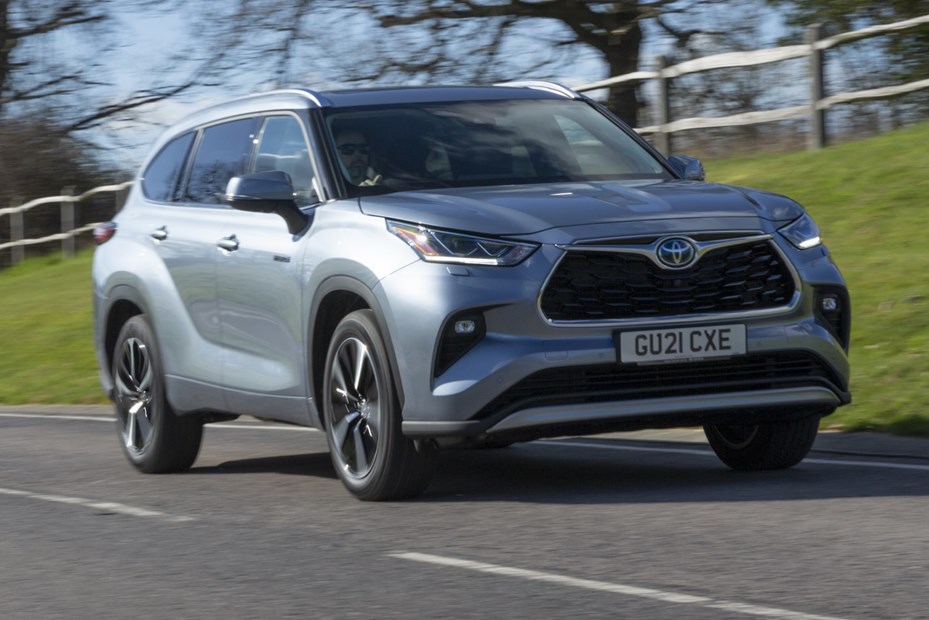
- Just one option available
- It’s a 2.5-litre self-charging hybrid
- Strong performance, but not for speed demons
What engine options are there?
Choosing an engine for your Toyota Highlander couldn’t be easier – there’s only one, so you like it or lump it.
It’s the latest evolution of Toyota’s 2.5-litre self-charging hybrid powertrain, similar to the engine found in the RAV4 as well as some Lexus models. It pairs a four-cylinder petrol engine with two electric motors, one on each axle providing four-wheel drive – though the car stays front-wheel drive until it senses a loss of grip.
We’re pleased to say that for most drivers, it should provide stellar service.
With 248hp it’s certainly no slouch – 0-62mph is dealt with in 8.3 seconds, which is more than fast enough for a family SUV. What that power really does is mean you don’t have to strain the Highlander’s engine to make good progress.
That’s important, as common to all Toyota hybrids is a continuously variable transmission. These have the tendency to send the revs spiralling high as soon as the driver asks for a bit of extra pace, making for a raucous experience. But with the Highlander’s ample pulling power, especially at low speeds where the two electric motors can really lend a hand, the engine remains hushed unless you really floor it.
It’s possible to force the Highlander to drive in ‘EV’ mode for a few miles, by pressing a button near the gear selector, but for the most part it’s best to simply let the car get on with it. It’ll shuffle between power sources all by itself, and the electric motors can cut in at speeds up to 78mph so they’re even useful on the motorway.

There are four other driving modes, named Eco, Normal, Sport and Trail. Eco dulls the throttle response in a bid to force you to drive more carefully, but it makes the Highlander feel rather sluggish. Sport goes too far the other way, sharpening responses to the point where it’s fairly difficult to drive the car smoothly. We’d recommend leaving the Highlander in Normal mode most of the time.
Trail Mode optimises the four-wheel drive system and accelerator for the best grip off-road. We haven’t had the opportunity to test the Highlander’s ability in the rough stuff, but it’s not really intended as a hardcore mud-plugger – opt for a Land Cruiser if that’s your priority.
How does it handle?
- Highlander focuses on comfort
- Relatively tidy handling, but no real feedback
- Keen drivers better served elsewhere
One look at the Toyota’s bulky bodywork ought to be enough to reassure you this isn’t a particularly sporty car. But that’s fine, because it doesn’t try to be – instead, the Highlander’s strength is comfort.
That doesn’t mean it’s a wobbly mess, though. In fact, with a low centre of gravity, it controls its body well much better than you’d expect for a car this size.
The steering is lightweight and direct, so it’s easy to manoeuvre the Highlander at slow speeds and position it where it needs to be on the road. That does translate into being slightly twitchy on the motorway, however.
A total lack of meaningful feedback, however, means those who really enjoy driving ought to opt for something more engaging, such as a SEAT Tarraco.


